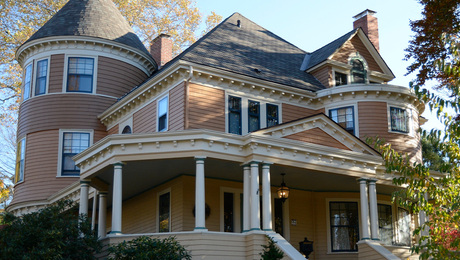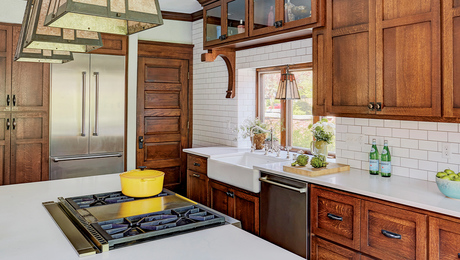Bungalow Redone
A 1909 bungalow in Portland, Oregon, gets an addition and an interior update.
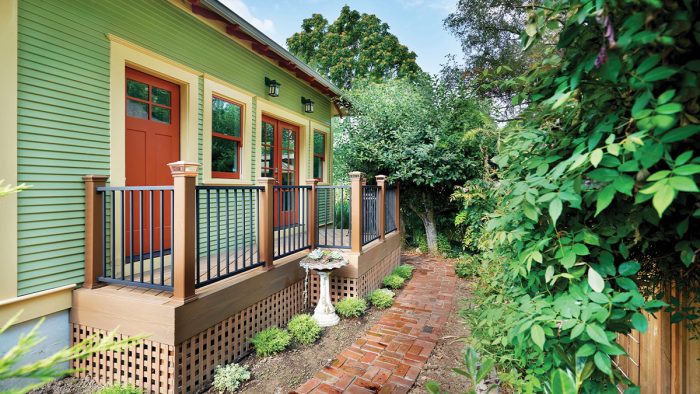
When in 2004 we bought this 1909 bungalow in Portland, Oregon, it was so dilapidated that the house inspector asked us if we knew what we were getting into. We could envision what it could become, though, because we work as a writer/stylist and photographer team for OHJ and other shelter magazines. We poured time, money, and sweat equity into the bungalow remodel.
I even designed a Craftsman-style front porch after we spent years removing aluminum siding and cedar shingles to uncover the wood lap siding. We installed wood windows, took the sole bathroom down to its studs for a period renovation, and turned the attic into a spacious bed–sit loft. The narrow staircase to the loft is original.
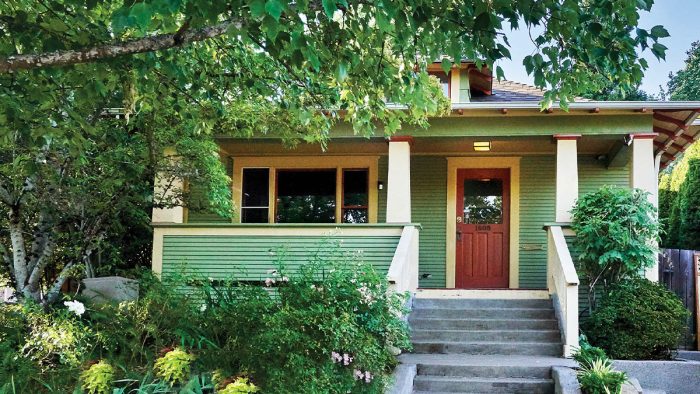
Deck and Kitchen
The one thing we never addressed, however, was the kitchen. The room was intersected by five doors, making it impossible to add a modern-size refrigerator. It didn’t matter because for years this house was our office space.
 |
 |
Fast forward to the summer of 2020. Philip, who’d worked in construction as a young man, decided to bump out the back of the house to create an eat-in kitchen and add a mudroom, a laundry (which the house lacked), a second bath, and a rear deck.
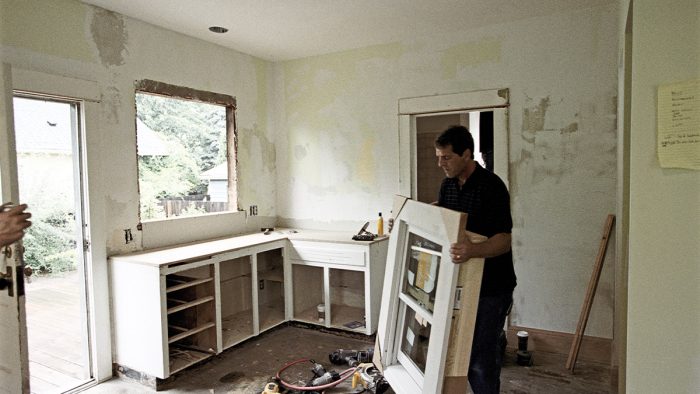
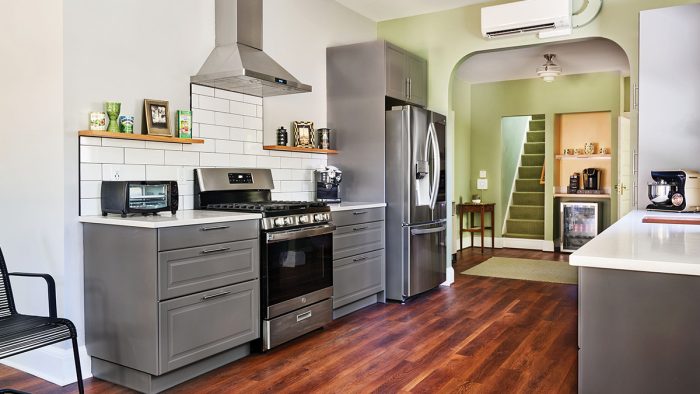
Decorated for Rental
We planned to decorate in a more mid-century style as this would become a rental. Our previous contractor, Mark Hereford of Hereford Construction, was unavailable, so we turned to interior-design colleagues and an architect to detail Mark’s earlier concept.
 |
 |
Three (new to us) contractors bid on the job. The company we chose assured us that there was no need to decommission the cesspool that dated to 1909. Well, city inspectors then informed us otherwise.
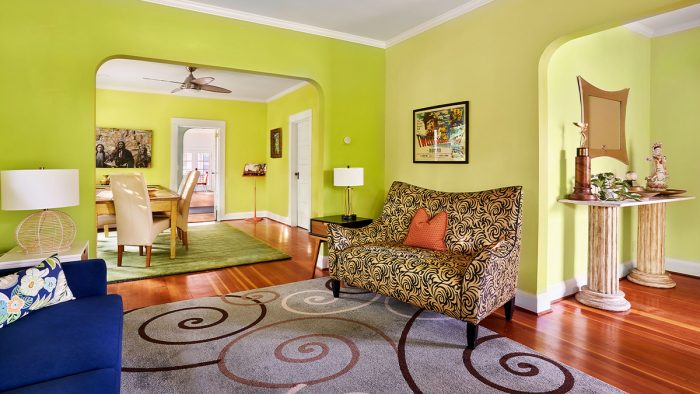
Video inspections of the drain helped us locate the old brick-lined cesspool— 15′ deep, 3′ across, and 12′ from back of house. It was intricately built by hand, apparently at great risk to workers back in the day.
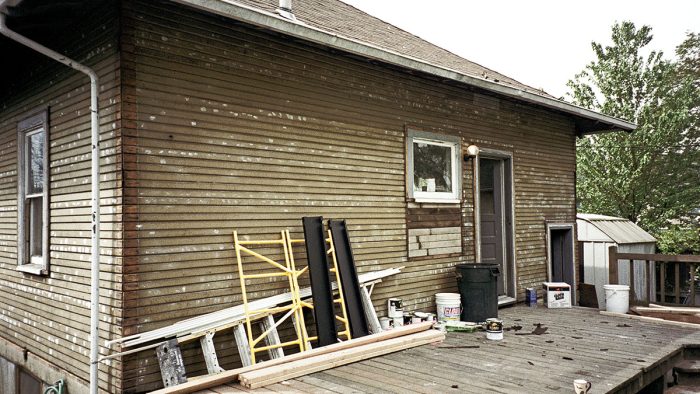
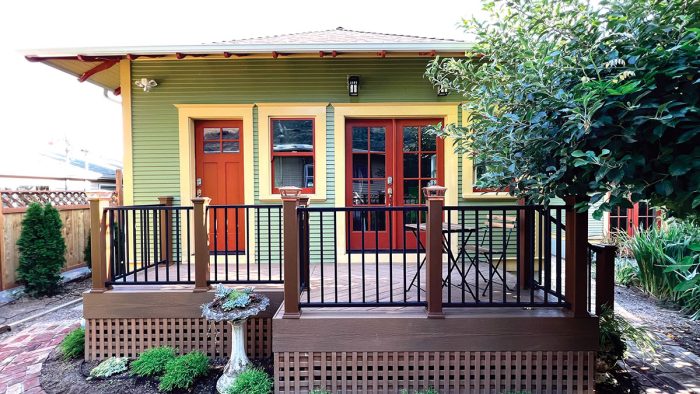
City ordinance did in fact require decommissioning the cesspool, which hadn’t been used since 1922 but was never filled. This was done by filling it with a cement slurry, a costly operation. Happily no sinkhole had ever opened. The sewer hookup came some-time after 1922 and functions still.
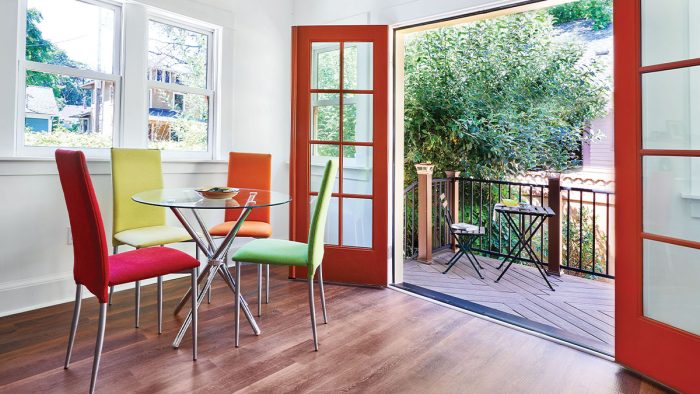
To align the addition with the existing roof, the architect designed nine trusses, which passed city inspection. By mid-August, with framing complete, Philip was acting as construction manager, keeping the various crews moving forward and even cleaning up the worksite each day.
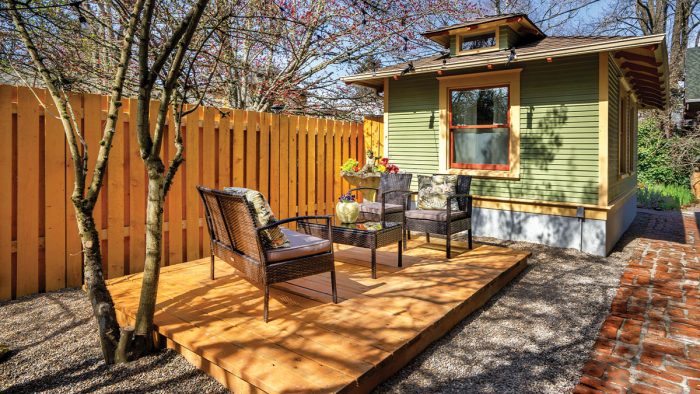
Using his plastering and painting expertise, Philip reiterated the existing archway between the living and dining rooms by constructing a similar archway at the entrance of the new bump-out. He also recycled original kitchen floorboards to create a rustic design on the wall of the mudroom.
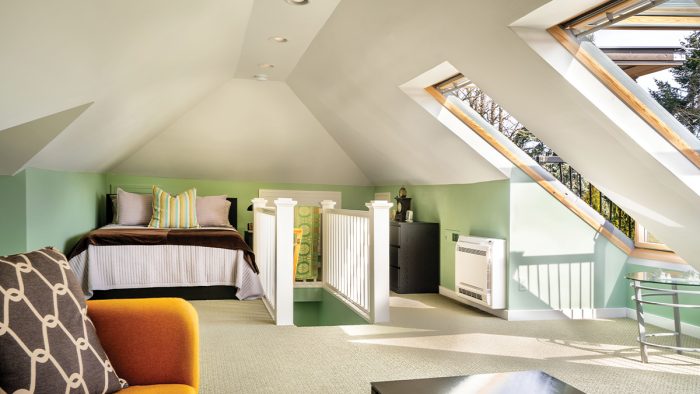
Budget-Friendly Upgrades
We used luxury vinyl plank Cali Saddlewood flooring throughout the addition, a budget-friendly choice that mimics the fir flooring. The design using an IKEA kitchen eschews upper cabinets, relying instead on shelves to open the space.
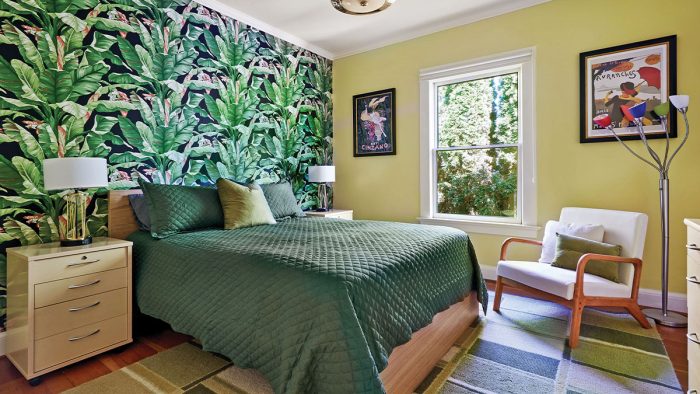
French doors lead to a Fiberon deck with unique herringbone design by Fernando of Red Framing. Double-hung Jeld-Wen windows continue the look set by handcrafted rafter tails.
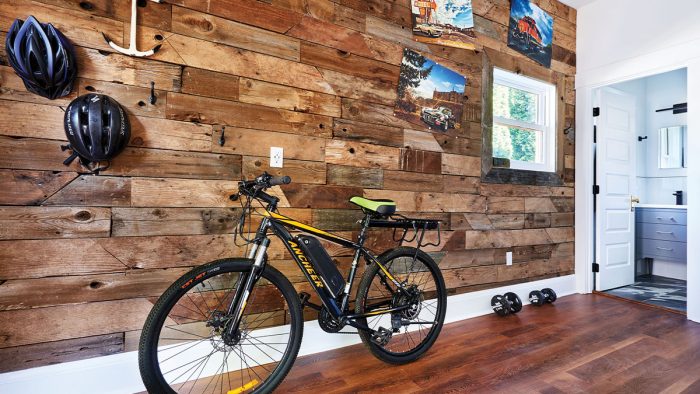
A separate garage had been demolished long before we bought the house. We created a new driveway, however, and built a summer house with a raised wood patio. Turns out we got a nice compliment from one of our city inspectors, who declared that he would love to call this renovated old house home!
— Photos by Blackstone Edge Studios.
RELATED STORIES













